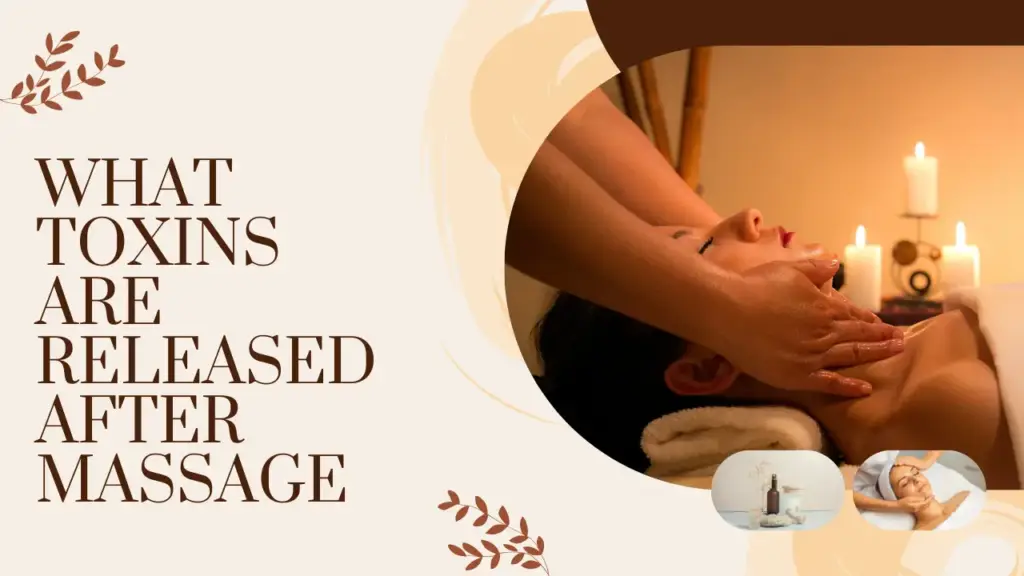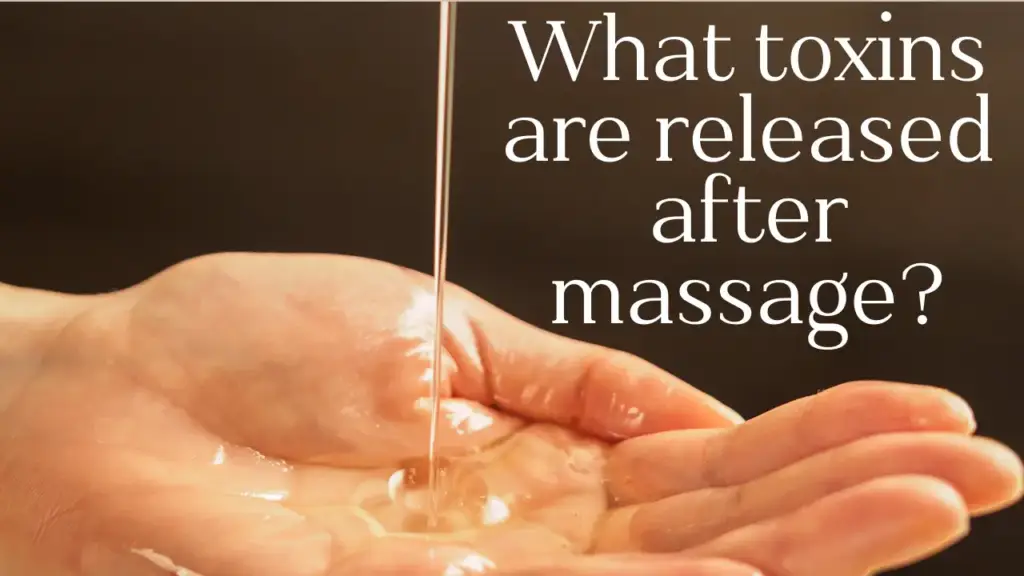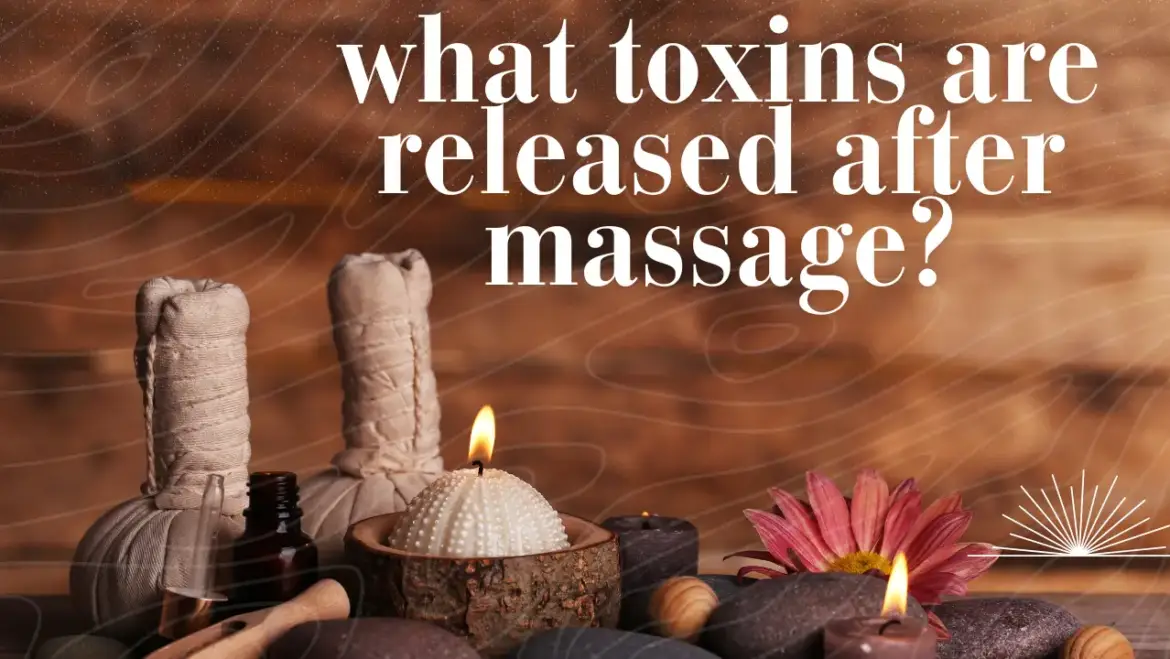What Toxins are Released After Massage?
Massage does not release toxins like heavy metals or pollutants. Instead, it helps move metabolic waste such as lactic acid, carbon dioxide, uric acid, and lymphatic waste through the body’s natural detoxification systems (liver and kidneys).
This complete guide will break down:
✔ What toxins (or waste products) are actually released after a massage.
✔ Why you might feel tired, sore, or nauseous post-massage.
✔ How massage affects your circulation, lymphatic system, and overall detox.
✔ Best ways to support your body after a massage.
✔ Myths vs. facts about toxins and massage.
By the end, you’ll know exactly how massage interacts with the body’s detox systems and what to do for the best results!
Does Massage Release Toxins or Just Move Waste?
Massage does not release “toxins” like heavy metals, pollutants, or chemicals. Instead, it stimulates circulation and moves metabolic waste that naturally builds up in the body. These include:
🔹 Lactic acid – Produced during exercise, can contribute to muscle soreness.
🔹 Carbon dioxide – A waste gas that accumulates in tissues and is expelled via breathing.
🔹 Uric acid – A byproduct of food breakdown, excessive amounts can lead to gout.
🔹 Lymphatic waste – Cellular debris, excess fluids, and bacteria processed by the lymph nodes.
💡 Key Takeaway: Your liver and kidneys are the real detox powerhouses! Massage helps move waste through your body, but it doesn’t remove toxins on its own.

Why Do You Feel Tired or Sore After a Massage?
Many people experience fatigue, mild nausea, headaches, or soreness post-massage. Here’s why:
✔ Increased circulation – Massage stimulates blood flow, which can temporarily overwhelm your system.
✔ Dehydration – More fluids are moved through your body, requiring extra hydration.
✔ Inflammation response – Deep tissue massage can cause mild muscle soreness, just like a workout.
✔ Blood pressure drop – Massage relaxes muscles, sometimes leading to temporary dizziness.
How Long Do These Symptoms Last?
Most post-massage side effects last a few hours to 24 hours. Staying hydrated and resting helps you recover faster!
How Massage Supports Detox (Lymphatic System & Circulation)
Massage therapy helps the lymphatic system, which is responsible for removing waste from the body. Since the lymphatic system doesn’t have a pump (like the heart for blood), massage helps move fluids and waste by:
🔹 Stimulating lymph nodes to filter out cellular waste.
🔹 Reducing fluid retention and swelling.
🔹 Enhancing immune function by moving white blood cells.
💡 Best Massage for Detox? Try a lymphatic drainage massage—it’s designed to improve lymph flow and waste removal!
Best Post-Massage Practices to Support Detox
To maximize the benefits of your massage and prevent discomfort, follow these simple steps:
✅ Drink plenty of water – Helps flush out metabolic waste.
✅ Rest and relax – Let your body recover and absorb the benefits.
✅ Eat light meals – Avoid processed, heavy foods that slow digestion.
✅ Gentle stretching – Prevents stiffness and enhances circulation.
✅ Avoid caffeine and alcohol – Both can dehydrate the body.
💡 Bonus Tip: Try an Epsom salt bath to relax muscles and enhance circulation!

Massage Detox Myths vs. Facts
| Myth | Fact |
|---|---|
| Massage removes toxins from the body. | Massage supports circulation and lymphatic drainage but doesn’t remove toxins directly. |
| You need to drink water to flush out toxins after a massage. | Drinking water helps hydration and supports kidney function, but your liver and kidneys handle detox naturally. |
| Massage detoxifies fat cells. | Fat cells store energy, not toxins. Massage won’t “flush out” fat-stored toxins. |
| Deep tissue massage removes heavy metals. | Heavy metals are removed by the liver and kidneys, not through massage. |
Final Word: Massage helps your body process waste more efficiently, but true detox happens through proper hydration, diet, and organ function!
Best Massage Types for Circulation & Detox
Want to boost circulation and waste removal? Try these massage techniques:
✔ Lymphatic Drainage Massage – Best for detox, swelling reduction, and immune support.
✔ Deep Tissue Massage – Releases tension, improves blood flow, and reduces muscle soreness.
✔ Swedish Massage – Enhances relaxation and mild detox effects.
✔ Sports Massage – Helps athletes recover by improving circulation and reducing lactic acid buildup.
Pro Tip: Combine massage with hydration, stretching, and a balanced diet for the best results!
FAQs About Massage and Toxins
🔹 Does massage help remove toxins from fat cells?
No, fat cells store energy, not toxins. Detoxification happens in the liver and kidneys, not through massage. (reddit guide)
🔹 Can massage help with lymphatic drainage?
Yes! Lymphatic drainage massage specifically helps move excess fluid and waste through the lymphatic system.
🔹 Why do I feel sick after a massage?
Possible reasons include mild dehydration, increased circulation, or temporary inflammation from deep tissue work. Stay hydrated and rest!
🔹 Do I really need to drink water after a massage?
Yes! While it won’t “flush out toxins,” water helps your body process waste efficiently and prevents dehydration.
Final Thoughts
Massage therapy does not remove toxins but supports circulation and waste removal by moving fluids and improving lymphatic drainage. If you feel sore, fatigued, or slightly unwell post-massage, it’s your body adjusting to increased circulation.
Key Takeaways:
✔ Massage helps move metabolic waste (lactic acid, uric acid, carbon dioxide).
✔ Your liver and kidneys handle real detox—not massage.
✔ Hydration, rest, and proper diet are crucial after a massage.
✔ Lymphatic drainage massage is the best for detox and circulation.
Want the best post-massage experience? Drink water, relax, and listen to your body!

